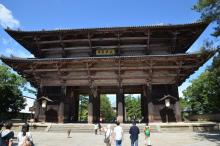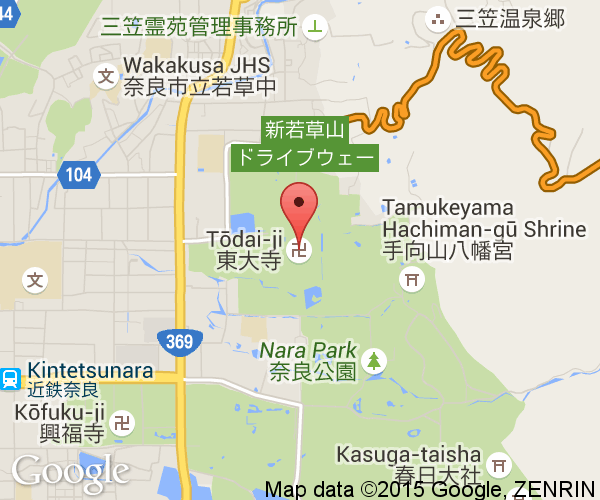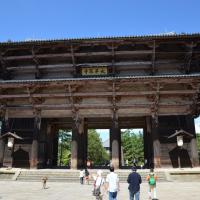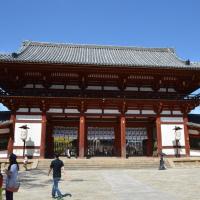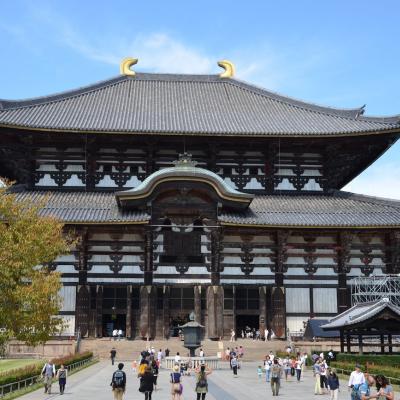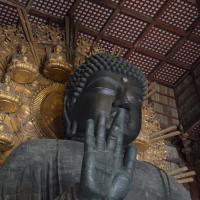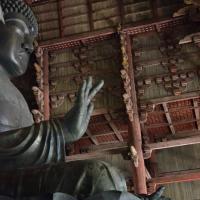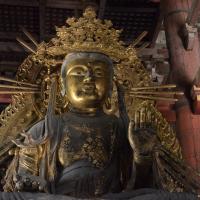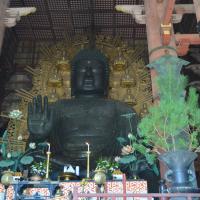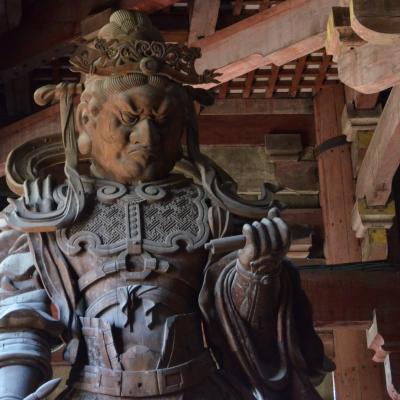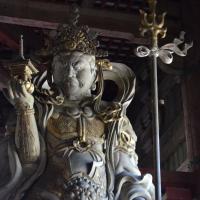Next Stop, Japan
Todai-ji
Any trip to Nara is not complete without gazing up at the daibutsu (Great Buddha) within the Great Buddha Hall at Tōdai-ji. The colossal scale of this bronze statue of Buddha has never been surpassed in Japan since its completion in 751. Indeed, it is still the world's largest. The scale of the undertaking was enormous for the time with some 2.6 million people contributing to the goal of constructing it and the surrounding complex.
The temple complex at Tōdai-ji is a UNESCO World Heritage Site.
Approaching the Complex
Tōdai-ji is to the north of the other historic sites in Nara Park. As you approach from the south, you'll enter through the Great South Gate. The gate dates from the late 1190s and was built after the first reconstruction of the Great Buddha Hall. The two 8.4 meter wooden guardians inside the gate dating from the same period are just a taste of what is to come.
As impressive as the Tōdai-ji is today, the complex as originally built would have been even more impressive to those who saw it. Two 100m tall pagodas (lost in an earthquake) were built to compliment the original Great Buddha Hall. That original hall was itself 30% larger. While it is a shame those are lost to time, the buildings and statues that survive as originals or rebuilt reproductions are still overwhelming.

Great Buddha Hall
The Great Buddha Hall (大仏殿 - Daibutsuden) that contains the daibutsu and other statuary was the world's largest wooden building until 1998. The Great Buddha Hall has burned down twice (1180, 1567) due to war. The current one measures 57 m long and 50 m wide and was completed in 1709. The columns supporting the roof are thick enough that one has a hole said to be the size of the nostril of the daibutsu. For a laugh, you can have a picture taken as you crawl through it. Enlightenment is sure to come to those that squeeze through.
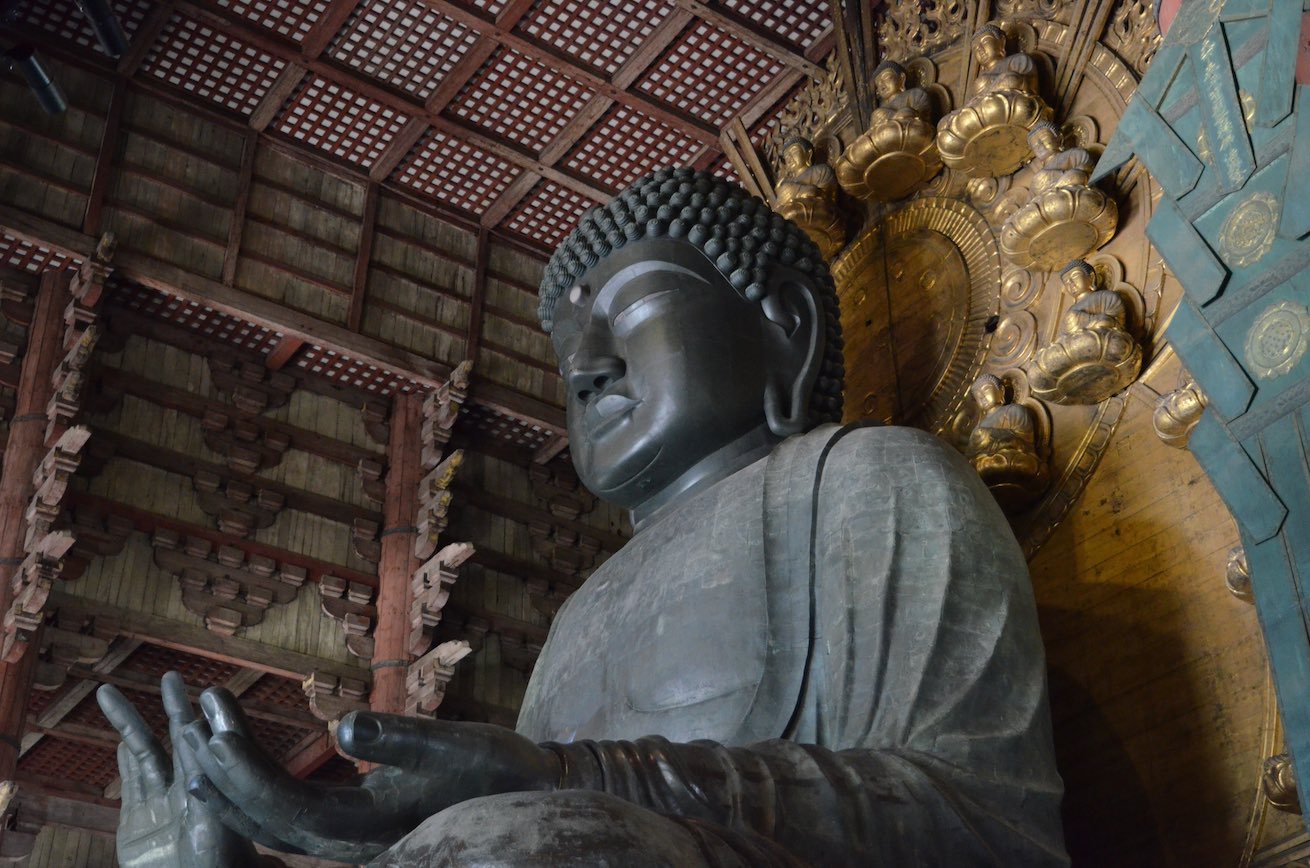
Nara Daibutsu
Completed in 751, the enormous daibutsu (Great Buddha) is a massive piece of bronze that consumed nearly all metal that was available at the time. It sits in the middle of the hall flanked by other large statues. It took eight castings over three years to build the 16 m high statue. At 500 tons, it is the world's largest bronze statue of the Buddha. A direct comparison is impossible, but the bronze would cost at least 2.5 million USD today. The relative sizes of elements of the statue are sized to take into account the distance from the viewer. Thus, the head is actually oversized compared to the body. The raised right hand grants protection and indicates that there is nothing to fear. The palm-up left hand indicates acceptance. The knee has a human tooth, pearls, mirrors, jewels and swords rattling around in it. These relics are probably connected somehow to Emperor Shōmu who ordered its construction.
The daibutsu has survived having its head popped off by a major earthquake in 855, wars that burned down its home twice and over a 100 years of living it rough without a proper hall above its head. Even if you're not buddhist, its still serene expression after suffering all that is worthy of respect.
Other Sights
Tōdai-ji Museum can be visited separately to the Great Hall or in combination for a small discount. Skipping the museum is probably not a great loss unless you are a serious fan of early Nara Buddhism. The other buildings like the bell tower and Hokke-dō (oldest building in the complex) lack the same appeal of the main attractions.
The Great Buddha's Story
By the early 8th century, Buddhism had become the religion of choice for the emperors. Emperor Shōmu (reign: 724 through 749) in particular worked hard to ensure Buddhism was practiced enthusiastically by the population. The first temple on the site, Kinshōsen-ji (金鐘山寺), was founded in 728 by Emperor Shōmu for the repose of the soul of a departed crown prince. It was made the head of a national system of monasteries in 741. All six major sects of Buddhism had their own shrines and administration here. Later, the complex became known as Tōdai-ji (東大寺-east great temple).
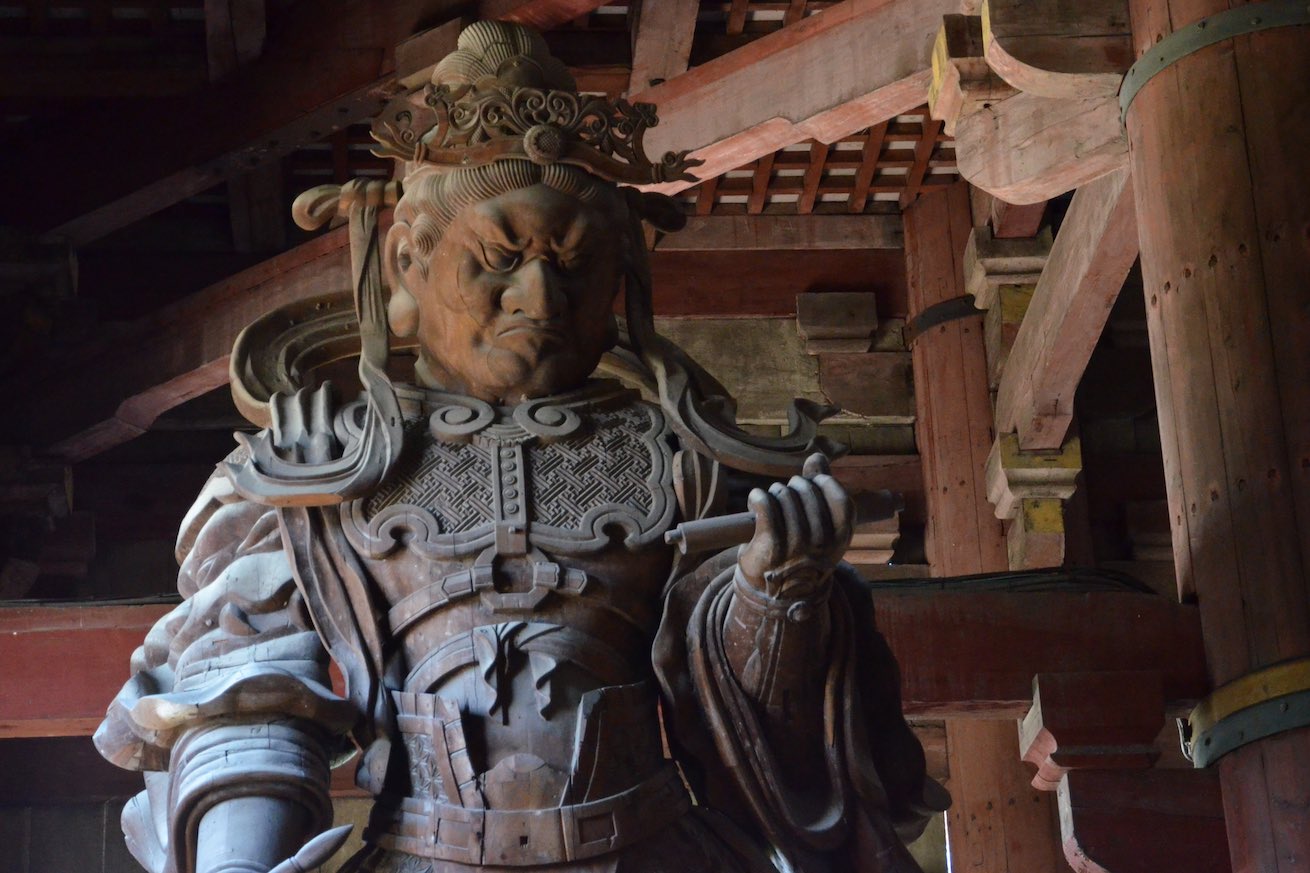
In 743, Emperor Shōmu issued a law that called on people to establish Buddhist temples throughout the land. He hoped that acts of piety would influence Buddha to protect the country from the plagues and other disasters that kept happening. The embodiment of these country-wide displays of reverence was to be a great Buddha statue and its hall at the spiritual focus of the religion in Japan. No half-hearted exhibition of faith was acceptable; It had to be a country bankrupting testimony of the country's absolute submission to Buddha. A massive amount of labor (estimated 2.6 million people) were mobilized to scour Japan for the wood and metal to build it and food to supply to the laborers. Around 350,000 people were working directly on the statues at the time. Finished in 751, the eye-opening ceremony the following year was performed by the Indian priest Bodhisena for Emperor Shōmu. The celebration involved some 10,000 monks and 4,000 dancers.
Getting There
Tōdai-ji is located east of central Nara City in Nara Park. There is a bus that leaves from JR Nara Station and Kintetsu Nara Station that stops a 5 minute walk away. Otherwise, it is a 20 minute walk on foot from Kintetsu Nara Station. The route is simply east along the main road and then north to Tōdai-ji. Those visiting here and other sites in Nara should anticipate to walk a fair bit.
Posted: August 4, 2015 Updated: August 29, 2015
